In this article I’m speaking with the one and only Mr. Seth Godin who gives his expert insights on “Branding & Marketing with AI in 2024”
Now when it comes to marketing Seth Godin is arguably the GOAT. His MBA from Stanford set the foundation for his ventures into his early career in Software and Book Publishing
He founded Yoydyne, an early internet marketing company which he sold to Yahoo in 1998. Then a the user generated platform Squidoo which he sold in 2014 and of course who can forget his 21 books that have sold millions of copies including
The Purple Cow
Permission Marketing
This is Marketing
And in this article
Brand Positioning with Tension in 2024
How AI Is the biggest thing since electricity
How to stay ahead in the age of AI
So if you want to learn from a philosophical futurist and the man who wrote the books on modern marketing, about what’s gonna change and what's gonna stay the same in our industry .
Branding vs. Marketing: An Evolving Relationship
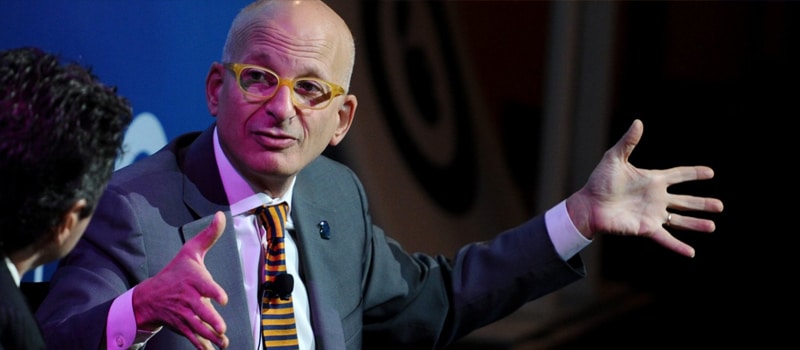
Stephen
You've discussed how advertising and marketing were once considered synonymous, yet you emphasize that marketing extends far beyond that, into a more complex domain.
Similarly, you view branding, traditionally taught as a subset of marketing, as having evolved into a broader entity.
What's your perspective on the evolution of branding within the marketing landscape, and how do you perceive the balance between these two disciplines?

Seth Godin
Many listeners understand that a brand extends far beyond a mere logo, yet the language surrounding branding often remains mired in confusion.
Statements like "we have a new brand" typically mean a new logo, not a fundamentally new brand identity.
Similarly, what many refer to as a "branding exercise" is often just a logo design process. The reality is, logos, in themselves, might not hold as much significance as we tend to believe.
Consider this: when asked to think of a great logo, people usually envision one associated with a brand they admire, rarely choosing symbols with negative connotations, regardless of their design strength.
This observation suggests that our connection to a logo stems more from our relationship with the brand it represents rather than the logo's aesthetic appeal.
For example, the Starbucks logo, despite its critiques, is iconic not for its design but for what it symbolizes to its audience.
Branding, then, is the process of crafting a resilient story that occupies a meaningful place in the audience's mind, one they welcome and retain. It's about creating a shorthand for the promises a brand makes and its consistency in keeping them.
A successful brand symbolizes trust earned over time. Ultimately, getting your brand right is less about your visual identity and more about how others perceive your brand's promise and integrity.
Branding vs. Marketing: Clarifying the Divide

Stephen
There's a noticeable education gap in the market concerning branding, exacerbated by the ease of starting a business today without a formal background in branding or marketing.
This gap often leads to misconceptions among new entrepreneurs, who might not fully grasp the nuanced differences between branding and marketing, thus applying these concepts inaccurately.
Given your emphasis on strategy, particularly in areas like positioning, storytelling, and brand personality, you describe brand strategy as the foundational methodology of a brand.
Conversely, you see marketing as the mechanism that mobilizes this strategy in the marketplace.
Would you agree that this distinction accurately separates the roles of brand strategy and marketing?
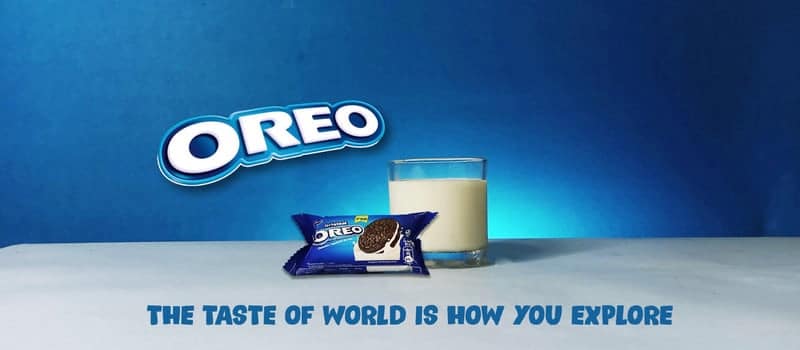
Seth Godin
I think that. It's a really useful way to do it. You know, I think that many of the people who call themselves brand strategists are not that, does Oreo the cookie have a brand strategy?
Well, they had one a long time ago, but now they have brand tacticians.
They have people who are doing marketing tactics to maintain a brand that had a strategy from a long time ago. Strategy requires.
The desire for a change that, how are you going to move pieces on the board so that your share of whatever it is, the difference you seek to make, the change you're making will go in the direction that you want.
And if you're not here to make a change happen, then the tactics, they don't, they're not unimportant. But when we're gonna talk strategy, it's about positioning. It's about game theory and it's about time.
How will tomorrow be different than today?
What are you doing?
Today's going to change the dynamic in the marketplace because people have choices and they're not gonna pick something 'cause you want them to.
PRO Brand Strategy BluePrint
Build Brands Like A Pro Brand Strategist

Brand Positioning: Changes Since 'The Purple Cow'
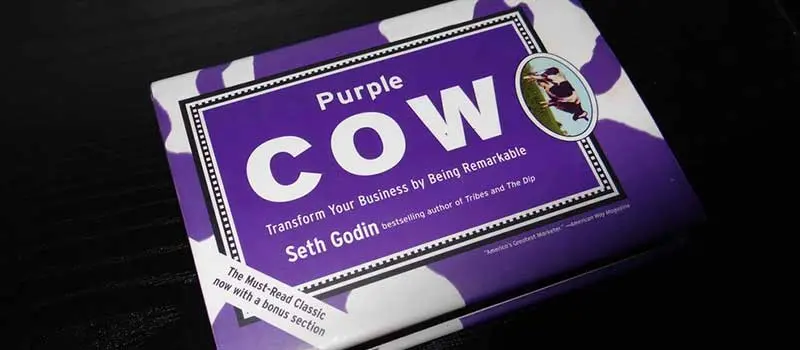
Stephen
Reflecting on your significant influence in the realm of brand positioning, it's clear that your work, alongside classics like "The Purple Cow" by Seth Godin and "Positioning" by Al Ries and Jack Trout, has been pivotal in shaping our understanding of strategic brand development.
Positioning is fundamentally about distinguishing a brand from its competitors, offering audiences a compelling reason to choose one brand over another.
This concept lies at the heart of why we build brands.
Considering the time that has elapsed since the publication of "The Purple Cow," I'm curious about your observations on the evolution of positioning as an art form.
Despite the timeless nature of its principles, have you noticed any shifts in the approach to positioning or new trends emerging in the landscape since the book's release?
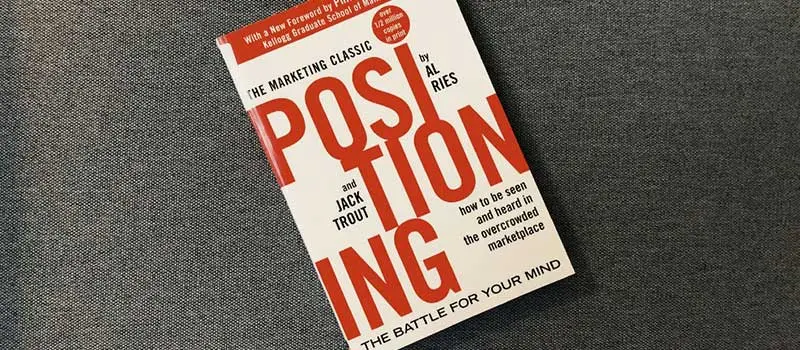
Seth Godin
Okay. So, you know, Trout and Ries's book a very long time ago had a big impact on me. The subtitle is The Battle for Your Mind. I think the biggest change is this and having taught positioning to more people than most positioning is a generous act.
It is not a battle, it is not selfish. It is not about differentiation. It is not about gaining something.
It is about offering people who are busy. A clear map of who you are and who you're not.
If you are not eagerly sending potential business to your quote competitors, then you don't actually have a position. Basically what you're saying, we're for everyone and you're everyone.
Positioning says if you want an $18 chocolate bar that's bespoke and handmade and ethical, that's what we make. If you want. Nestle's bar to give out on Halloween. That's made with slave labor. That's what they make. Here's their phone number we don't compete with Nestle. They're doing that.
We do This positioning is this generous act to say, if you're looking for this, that's what we have. But if you're looking for that, that's what they have.
How To Explore Creative Angles In Brand Positioning

Stephen
You've highlighted an interesting perspective on brand positioning, emphasizing the importance of serving the audience effectively.
This approach suggests that understanding the best ways to cater to your audience can significantly enhance how a brand positions itself, potentially making it more appealing to consumers.
You mention the concept of positioning through various angles or verticals, going beyond traditional product features and benefits due to the increasing competition in today's markets.
Considering this, I'm curious about the innovative approaches you favor for brand positioning.
Specifically, what are some of the more creative angles, such as brand personality or associations, that you believe offer unique opportunities for differentiation and appeal?

Seth Godin
In the realm of brand positioning, two critical lessons stand out for effectively differentiating a brand in a crowded marketplace.
Firstly, the traditional XY grid, a common tool for positioning, requires careful consideration to ensure all four quadrants are viable.
It's a common misstep to categorize competitors' offerings as inferior ("bad stuff") versus your superior products ("good stuff").
However, true differentiation lies in recognizing that not all products can be universally superior.
For instance, the choice between a luxury handbag and an affordable one reflects different consumer needs and preferences. Similarly, someone might prefer a durable backpack with a lifetime guarantee over one that's cheap but lacks longevity.
These examples underscore the importance of selecting valid axes that cater to diverse customer desires, avoiding the simplistic binary of good versus bad.
The second lesson shifts the focus from features to benefits.
While marketers often highlight the features of their products, believing them to be the key selling points due to the effort involved in their development, it's the benefits these features provide that truly resonate with consumers.
For example, button-fly jeans (a feature) are not just a design choice; they're valued for the perceived benefit, such as the appeal they might have to someone's significant other.
This distinction between features and benefits is crucial in crafting messages that speak directly to what customers genuinely care about, moving beyond the technical aspects to the actual impact on their lives.
Together, these lessons emphasize the necessity of strategic positioning and communication in marketing, ensuring that brands connect with their audiences on a meaningful level.
Effective Storytelling: Avoiding Common Branding Mistakes
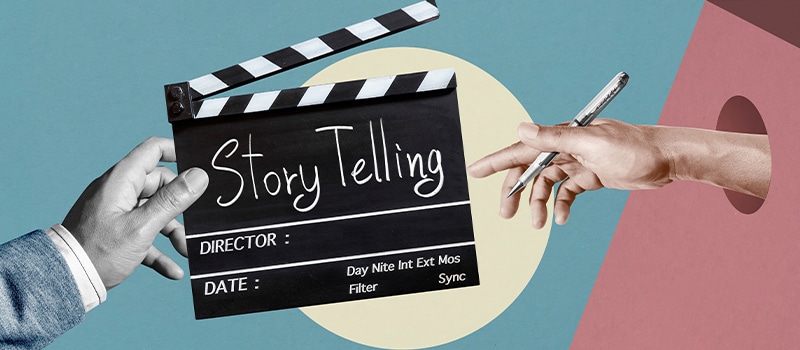
Stephen
The emphasis on storytelling in marketing, which you strongly advocate, opens an important discussion on its proper application and common misconceptions. While features of a product can be straightforwardly presented, the art of selling benefits is often best achieved through storytelling.
However, there seems to be a prevalent misunderstanding about what effective storytelling entails.
Many believe it revolves around sharing the founder's journey, focusing on personal dreams and achievements.
As you've pointed out, this approach misses the mark because consumers are primarily interested in what's in it for them, seeking stories that resonate with their own experiences and aspirations.
What common pitfalls are you observing in how brands approach storytelling, and what strategies do you recommend for crafting narratives that genuinely engage the audience by centering on their needs and how the product or service enriches their lives?

Seth Godin
Bernadette Jiwa, hailed as the world's leading expert on storytelling, has made significant contributions to our understanding of this fundamental human technology through her five bestsellers.
Originating from Ireland and Australia, Jiwa's insights illuminate storytelling as an intrinsic part of human nature, resonating deeply with our emotional selves.
She identifies three core elements that stories tap into: status, fear, and affiliation.
These themes speak directly to the emotional brain, transforming external narratives into personal tales that become integral to our identity.
An illustrative example of storytelling's power is observed in the unique cultural practice in Georgia, USA, where 20% of residents start their day with Coca-Cola.
This choice isn't driven by any direct advertising campaign urging consumers to drink Coke for breakfast; instead, it's rooted in deeply personal stories. Many recall their mothers serving them Coke in the morning, linking this habit to feelings of safety and nostalgia.
The simple act of drinking Coke becomes a reminder of maternal love and care.
This emotional connection was overlooked during the launch of New Coke, which, despite its improved taste, was met with resistance because it inadvertently challenged these deeply held memories.
This case underscores the significance of understanding the story behind the story, emphasizing how narratives can forge powerful emotional connections with brands.

Stephen
Your explanation beautifully underscores the essence of our role as brand builders: to distill complexity into simplicity, making intricate concepts both understandable and engaging.
This approach to storytelling is particularly compelling, offering a lens through which we can view brand narratives.
Considering this simplicity in storytelling, especially from the perspective of small businesses (though equally relevant to larger corporations), what are some practical methods for delivering these stories across the myriad of channels available today?
How can small businesses effectively break down and tactically share their narratives to resonate with their audience through various platforms?

Seth Godin
During the late 1920s and early 1930s, amidst the economic hardship of the Great Depression, soda fountains emerged as popular social hubs in the United States, staffed by individuals known as soda jerks.
These workers crafted various concoctions, including milkshakes and ice cream sodas, often incorporating raw eggs as a protein-rich addition for only a penny or nickel.
In an effort to boost sales and capitalize on the marginal profit from eggs, a trainer named Wheeler was hired to advise these soda jerks on increasing egg sales.
Wheeler's approach was ingeniously simple yet profoundly effective. He instructed the soda jerks to ask customers, "One egg or two?" when they ordered a soda.
This tactic cleverly bypassed the question of whether to include an egg at all, instead framing the decision around how many eggs to add.
The psychological implication was that adding an egg (or two) was the norm, positioning those who opted out as outliers.
This strategy not only made customers feel more affluent by affording this small luxury but also avoided making them feel embarrassed for not adding an egg.
Wheeler's method serves as a prime example of a tactical maneuver that leverages storytelling and customer psychology.
It highlights the importance of how framing a choice can significantly influence consumer behavior without resorting to manipulation.
This case underscores a timeless lesson in marketing: understanding and engaging with the customer's mindset can transform the simplest transaction into a memorable experience, encouraging repeat business and fostering a sense of generosity and inclusion.
Explore Brand Strategy
Programs & Tools
Strategies for Finding Your Smallest Viable Market
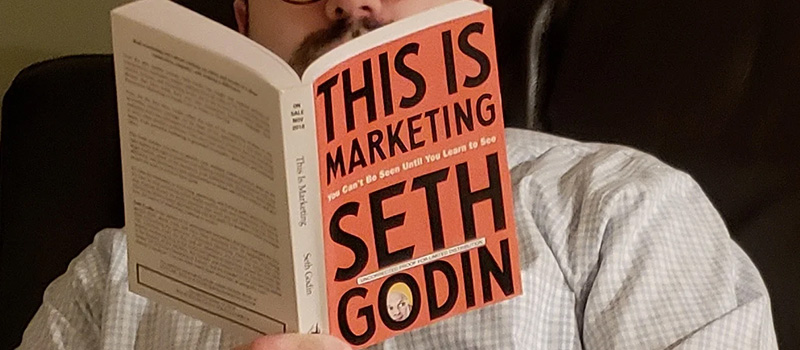
Stephen
In the realm of branding and marketing, the concept of the smallest viable market, as discussed in "This is Marketing," offers a compelling approach for brands, especially small businesses, to effectively reach their audience.
The challenge, however, lies in identifying and embracing this segment without the fear of excluding potential customers.
Many brands, in their quest for growth, fall into the trap of attempting to appeal to everyone, which can dilute their message and impact.
Given the importance of deep audience research and a profound understanding of consumer needs and desires, what are some of the most effective strategies for pinpointing the smallest viable market?
How can brands overcome the apprehension of narrowing their focus and instead, confidently target a specific group that aligns with their values and offerings, thereby ensuring a more personalized and impactful engagement?

Seth Godin
A critical barrier to selecting a smaller, more focused audience is not just the allure of capturing a broader market but also the fear of failure associated with targeting a precise segment.
This apprehension stems from the worry that if a specifically chosen audience does not respond positively, the responsibility falls squarely on the brand, limiting its perceived flexibility to pivot to a different demographic.
For example, a headphone manufacturer could broadly target "anyone with ears," or choose to specialize further, perhaps catering exclusively to podcasters, and even more narrowly, to podcasters who value visually noticeable headphones for video content.
The risk is that if this specific group does not embrace the product, the brand might feel trapped by its choice.
However, this precise targeting is often what distinguishes successful brands. Companies like Patagonia and Nike started with tightly defined audiences and grew significantly over time as their initial focus helped them establish a strong brand identity, which then broadened organically.
Whole Foods is another example of a brand that started with a specific focus and expanded its appeal.
On a personal note, having written twenty-one bestsellers that have never reached more than 1% of the US population illustrates this principle beautifully.
It's a testament to the power of appealing to a niche; achieving significant success without needing to dominate the market share.
This approach also provides the freedom to stay true to one's vision, allowing for the response to criticism with, "It wasn't for you," underscoring the strategic value in embracing a specific audience wholeheartedly.
Strategic Insight: Key for Marketing Specialists

Stephen
The apprehension around committing to a specific niche or vertical is a common concern among entrepreneurs, especially those venturing into brand building for the first time.
This fear often stems from the belief that focusing narrowly might limit potential opportunities.
However, as you've pointed out, the power of relevance cannot be overstated—tailoring your approach to closely align with the unique pain points, language, and personality of a targeted audience can significantly enhance engagement and preference over competitors who aim to appeal to a broader demographic.
This strategy of prioritization not only clarifies your brand's message but also deepens its connection with the intended market.
Given the diverse ecosystem within the marketing and branding industry, encompassing a range of specialists from designers and copywriters to social media marketers, each contributing from their unique perspective, a question arises:
How crucial is it for these execution-focused professionals to have a foundational understanding of strategy?
Would a deeper grasp of strategic principles aid them in their roles, enabling more cohesive and effective contributions towards the overarching goals of the brands they serve?

Seth Godin
In the landscape of work, individuals often find themselves either operating within a system or endeavoring to transform it.
For those immersed in the system, such as a book cover designer renowned for crafting the industry's most compelling covers, the path to success is clear.
By excelling in their niche, they secure a steady stream of work without the need to overhaul existing paradigms within the publishing world. Their expertise and executional excellence ensure their demand.
Conversely, there are those driven by the ambition to effect systemic change, akin to altering how the publishing industry operates or how books are perceived and engaged with.
This requires a deep understanding of the system itself, the ability to observe its workings, and the capability to initiate actions that redefine the status quo.
Great brands are often the result of such visionary efforts, where the strategic foresight to change the system offers resilience and opens up a spectrum of tactical possibilities.
This bifurcation presents two distinct paths: becoming the best within the system or pioneering change by reimagining the system itself.
The realm of brand strategy, in particular, highlights this divide. Many well-known companies often seek strategic minds capable of guiding them, not just in tactical execution but in crafting overarching strategies that drive meaningful change.
However, individuals with the capacity to devise and implement such transformative strategies are rare, underscoring the unique challenge and opportunity in bridging the gap between tactical expertise and strategic innovation.
Strategic Shifts in Execution and Permission Marketing

Stephen
The shift towards a more strategic perspective among tacticians, such as freelancers and small agencies, is becoming increasingly evident.
As they delve deeper into their clients' needs and objectives, questions about the "why" behind certain tasks are emerging, signaling a move from purely executing tasks to seeking a deeper understanding of the strategic underpinnings.
This transition highlights the growing importance of having a foundational grasp of strategy within the branding domain, regardless of one's role in the tactical execution.
Given your extensive experience and advocacy for permission marketing—a concept you've not only pioneered but also practiced through your blog and newsletter.
I'm curious about your current views on its effectiveness and relevance. In an era where building genuine relationships with clients is paramount, do you see any evolving trends or shifts in the approach to permission marketing?
Or do you believe that, despite the changing landscape, permission marketing remains the most effective strategy for nurturing client relationships?

Seth Godin
The pervasive issue of narcissistic, short-term thinking among marketers has significantly tarnished the integrity of various mediums.
This mindset, driven by a misguided belief in a moral right to incessantly seek attention, leads to intrusive tactics like spamming and unsolicited requests.
For instance, the irony of receiving numerous requests to appear on a podcast that has never featured guests highlights the lack of genuine engagement and understanding.
Such actions not only disrespect the audience's space but also degrade the quality of the medium, akin to "peeing in the pool," rendering it less valuable for everyone.
In stark contrast, the discipline of permission marketing stands as a beacon of respect and effectiveness. Building a permission base requires time and genuine effort, but it yields invaluable rewards.
Having cultivated a readership of a million people, the luxury of focusing on creating work for an audience, rather than scrambling to find an audience for each piece of work, is profound.
This approach is not just about choosing the right medium, be it email, SMS, or direct interaction, but about fostering a connection so strong that your absence would be felt.
Yet, many aspiring brands overlook the dedication required to develop such a relationship.
The true measure of a brand's impact is whether it would be missed if it ceased to exist.
Unfortunately, for many self-proclaimed brands, the harsh reality is that their disappearance would merely lead to alternatives filling the void without a second thought from consumers.
This reflection challenges brands to consider the depth of their relationships with their audience and the legacy they wish to build.
Permission Marketing: Cultivating Lasting Impact

Stephen
The prevalent approach of short-term, narcissistic marketing strategies has increasingly compromised the authenticity of various channels, propelled by a misplaced conviction of entitlement to capture attention through aggressive means.
This tactic, exemplified by the irony of receiving guest requests for a podcast that exclusively features solo content, underscores a broader disregard for meaningful engagement and respect for the audience.
Such strategies not only encroach upon the audience's space but also diminish the medium's value for all participants.
How can marketers pivot from these intrusive practices to embrace the principles of permission marketing, a method that champions respect, patience, and genuine effort in cultivating a loyal audience?
Considering the significant contrast between these approaches, what steps can brands take to ensure their presence is not only noticed but deeply missed should they ever withdraw, thereby establishing a lasting legacy and a meaningful connection with their audience?

Seth Godin
I intentionally decommercialized my work, removing any incentive to increase my email open rates.
While I used to be heavily focused on metrics, having even invented email marketing, I found that this approach didn't necessarily improve the quality of my work as a creator.
The email landscape has also changed, with platforms like Gmail sometimes filtering my content into promotional folders, reducing visibility.
Despite these challenges, I've shifted my focus away from optimizing metrics and instead prioritize simply doing my work.
My goal is to create content that is helpful and resonates with the right audience, rather than obsessing over open rates or engagement metrics.
I've come to realize that clarity about who my work is for and its purpose is more crucial than constantly pruning and optimizing.
Ultimately, if I'm writing for the right audience, they will naturally engage with my content, making self-pruning unnecessary.
Authenticity in Messaging: Why It Matters
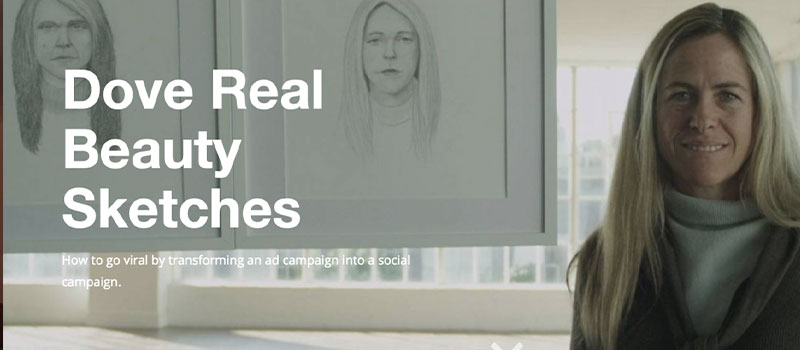
Stephen
Authenticity is often misunderstood and can seem clichéd, like stating integrity as a core value. However, its importance lies in its ability to foster genuine connections and trust with our audience.
In a world where consumers are bombarded with countless messages daily, authenticity stands out as a beacon of sincerity and reliability.
Therefore, it's crucial to convey authenticity in our messaging effectively.
One approach is by being transparent and honest about our values, beliefs, and intentions. By aligning our actions with our words and showcasing the human side of our brand, we can cultivate authenticity that resonates with our audience on a deeper level.
How do you believe brands can authentically communicate their values and connect with their audience in a meaningful way?
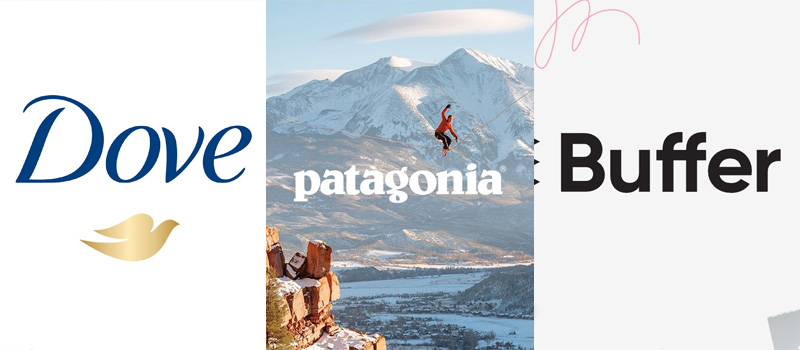
Seth Godin
I believe authenticity has become somewhat misconstrued, often used as an excuse for behavior that lacks integrity.
For me, integrity trumps authenticity any day. It's about consistency, being true to oneself even when it's challenging.
Whether I'm a surgeon, a copywriter, or in customer service, I strive to embody the best version of myself, regardless of my mood or circumstance.
Authenticity shouldn't be a license to be difficult or negative.
Instead, it's about revealing the true essence of who we are when no one is watching.
That's the version of ourselves that truly matters to others.
When people speak of authenticity, I see it as an opportunity to demonstrate unwavering commitment to excellence, rather than an excuse for anything less.
It's this commitment to integrity that fosters genuine connections and earns trust in any role or industry.
The Future of Branding: Embracing AI

Stephen
As we navigate the rapidly evolving landscape of marketing and branding, the emergence of artificial intelligence (AI) presents both opportunities and challenges.
Looking ahead five years, the integration of AI is poised to revolutionize the discipline, reshaping strategies and tactics in profound ways.
From personalized content creation and predictive analytics to automated customer interactions, AI promises to streamline processes and enhance efficiency. However, with this transformation comes the need for professionals to adapt and innovate.
Staying ahead in this dynamic environment requires a proactive approach, embracing AI technologies while also honing essential human skills such as creativity, critical thinking, and emotional intelligence.
How do you envision AI shaping the future of branding and marketing, and what strategies would you recommend for professionals to effectively navigate and leverage these advancements?

Seth Godin
I firmly believe that artificial intelligence (AI) represents the most significant shift in our world since the advent of electricity, surpassing even the transformative impact of the internet.
It's not merely a tool; it's a fundamental game-changer that demands our attention and utilization.
Recently, I experienced firsthand the remarkable capabilities of AI when I input a lengthy business plan into Claude.ai. Within seconds, the AI generated a concise, insightful memo pinpointing contradictions and areas needing improvement.
This incident illuminated the reality that AI can now replace mere competence, handling tasks faster and more cost-effectively than humans.
Consequently, the onus is on us to transcend mediocrity and offer something uniquely human—something AI cannot replicate.
As a brand strategist and content creator, I understand the implications of AI's capabilities. It's a wake-up call for designers, brand namers, and creatives alike. If AI can churn out brand names and logos at lightning speed, it's evident that standing still is not an option.
Adaptation is imperative. Instead of clinging to outdated notions of job security, we must embrace change and leverage AI as a tool to enhance our craft.
The future belongs to those who can seamlessly integrate AI into their workflows, unlocking unprecedented levels of efficiency and creativity.
It's a paradigm shift, but also an opportunity for agile individuals to thrive in a rapidly evolving landscape.
Let's embrace the challenge and harness the power of AI to propel us forward into a new era of innovation and possibility.
Top 3 Branding Tactics for Unfunded Startups

Stephen
If I were to remove your Seth Godin title and position you as the leader of an unfunded startup with a limited budget, what are the top three strategies you would implement to establish and promote your brand effectively?
Seth Godin
In considering the path to building a successful venture, the first question I ask myself is whether I aim to seek funding or not.
For those seeking funding, the focus shifts to creating something that aligns with what potential funders are looking to support, rather than necessarily crafting a sustainable and viable business model.
Personally, this isn't my area of interest, so I tend to veer away from this route.
Secondly, my attention turns to developing a product or service that resonates with customers and compels them to make a purchase.
Key to this is the creation of tension, instilling in potential customers the belief that their lives will improve by engaging with what I offer, or risk being left behind if they don't.
This approach challenges the conventional notion of relieving tension and instead embraces the power of creating it.
A prime example of this is Facebook's early pitch to users, tapping into the tension of curiosity about what others are saying behind one's back.
Finally, I recognize the immense value of leveraging the network effect.
By building something that becomes more valuable as more people use it, I can harness the natural inclination for individuals to share and spread the word about products or services that enhance their own experiences.
This dynamic creates a self-reinforcing cycle where the product or service gains momentum through word-of-mouth referrals, ultimately driving its success.
On-Demand Digital Program
Brand Master Secrets
Make the transition from hired-gun to highly valued brand strategist in less than 30 days. The systems, frameworks and tools inside this comprehensive program are all you need to level up.












